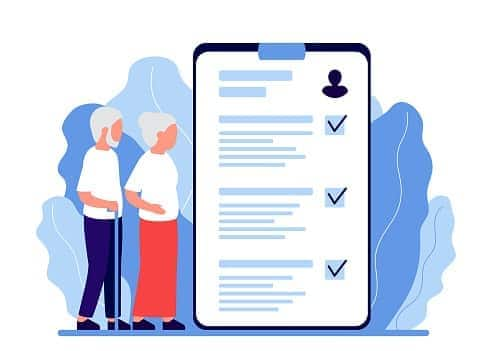- What is a private health insurance plan?
- Types of private health insurance
- Where to buy private health insurance
- Types of ACA health plans
- How do I choose a private health insurance plan?
- Health insurance company-direct plans
- How much is private health insurance?
- Average health insurance cost by state
- What is the cheapest private health insurance plan?
- When to buy private health insurance
- Private vs. public health insurance
- FAQ: Private health insurance
What is a private health insurance plan?
Private health insurance is individual health insurance available to an individual or family through either the federal or state health insurance marketplace (where ACA plans are sold) or directly from private insurance companies.
"Policyholders purchase this type of coverage directly from the insurer rather than through a plan sponsored by an employer, trade association, union or other groups that solicits multiple potential policyholders,” says Brian Martucci, the Minneapolis-based finance editor for Money Crashers.
For some people, private health insurance is the only option.
Unless the plan is subsidized by the government, as with some ACA plans, "private health insurance plans are paid out of pocket by a person or family using a personal bank account with post-tax income. You can choose and customize a private health insurance plan based on your needs," says John Bartleson, owner of Health Benefits Connect.
Types of private health insurance
Different types of private health insurance plans are available, each with distinct features. The largest differences are in how you get care, particularly referrals, and the network of providers available to you.
Health Maintenance Organization (HMO):
HMOs are a type of managed healthcare plan that limits coverage to doctors, clinics and hospitals that are part of the HMO contract.
- It will not cover out-of-network care unless it's an emergency.
- You’ll need to have a primary care provider (PCP) and need a referral to see a specialist.
- HMOs generally have lower monthly premiums than other types of coverage.
Preferred Provider Organization (PPO):
This type of health plan allows you to see in- and out-of-network providers.
- In-network services are covered at a higher rate, but coverage is still available out of network.
- Referrals are not required to see a specialist and you don’t have to have a PCP
- Monthly premiums are generally higher than with an HMO
Exclusive Provider Organization (EPO):
EPO plans combine some of the features of an HMO with those of a PPO
- Coverage is only provided for in-network care, with the exception of emergencies.
- You don’t always have to have a PCP and you usually don’t need a referral to see a specialist.
Point of Service (POS):
This type of plan is also a hybrid of an HMO and a PPO, but is a little more flexible on out-of-network care.
- Like an HMO, you must have a PCP to handle care.
- Out-of-network care may be covered, but only if an in-network doctor provides a referral.
High Deductible Health Plan (HDHP):
A health plan best suited for younger and generally healthy people who don’t anticipate much need for regular medical care.
- As the name indicates, this kind of health plan has higher deductibles but lower monthly premiums.
- The added advantage to this plan is the access to a tax-advantaged Health Savings Account (HSA). The funds from the HSA can be used to pay out-of-pocket costs until the deductible is met.
Where to buy private health insurance
There are two main places to buy a private health insurance plan:
- The federal (ACA) marketplace
- Directly from a health insurance company
The federal marketplace offers ACA-compliant plans on the federal health exchange at HealthCare.gov. These are often referred to as "Obamacare" plans.
These health plans offer comprehensive covered benefits, including the 10 essential health benefits, such as mental health, prescription drugs, outpatient and preventive care. No pre-existing condition exclusions apply, which means you can’t get denied because of your health. The U.S. Department of Health and Human Services has a marketplace exchange website where you can compare plans. About a dozen states have their own marketplace exchange and sites.
"ACA plan premiums are usually very low if you qualify for a payment discount or tax credit based on your household's annual income," Bartleson says. "But if you don't qualify for a subsidy discount, your premiums may be more expensive than other health care options. Also, many of the plans' networks are local HMO plans with limited options and you are usually limited to apply only during the open enrollment period – unless you have a life-changing event like moving, getting married or losing an employer-sponsored health plan."
Types of ACA health plans
The ACA marketplace offers several different types of plans that are labeled with metal tiers, including:
- Platinum
- Gold
- Silver
- Bronze
These individual plan metal tiers differ by premium, out-of-pocket and deductible costs. For instance, Platinum and Gold plans offer lower out-of-pocket and deductible costs when you need health care services but higher premiums. Bronze and Silver plans have lower monthly premiums and higher out-of-pocket expenses.
People younger than 30 or those facing financial hardship may also qualify for a catastrophic health plan.
"Catastrophic plans have the lowest premiums and highest out-of-pocket costs for care but restrict eligibility to policyholders under 30 or those who qualify for certain hardship exemptions," Martucci says.
Yet another option is short-term health insurance. These short-term plans are often limited to one year, with the chance to extend the policy for another two years.
Short-term plans are low-cost with low premiums but hefty out-of-pocket costs. Some states don't allow short-term plans, while others restrict the plans' length.
How do I choose a private health insurance plan?
Choosing the right private health insurance plan for you and your family is important, so take your time and consider your options. Consider all of the following steps to determine which plan is right for you.
- Decide where you’d like to buy health insurance. You can purchase an ACA plan through the federal healthcare marketplace or shop directly with insurance companies. An insurance agent or broker can help you if you buy an off-exchange plan (a plan that isn’t on the marketplace).
- Consider what you want to pay each month vs. out-of-pocket costs. Generally, the more you pay each month, the less you can expect to pay for deductibles, copays and coinsurance. Finding a balance that works for you between the monthly premium and the out-of-pocket costs will narrow down your choices.
- Consider health plan networks and whether you need out-of-network coverage. The network refers to the medical providers and facilities your health plan has contracted with to provide the necessary health care. The larger the network of a health plan, the more choices available for you to choose from. You’ll also need to decide if you’re OK with an HMO’s in-network restrictions or whether you want the flexibility of a PPO to go out of network.
Health insurance company-direct plans
The ACA marketplace isn't the only place to turn for health insurance. You can also price out individual health insurance coverage options directly from health insurers like Aetna, Cigna and Blue Cross Blue Shield.
"With direct private plans, your premiums may be less expensive than for an unsubsidized ACA plan. You can typically apply for coverage outside of the open enrollment period, doctor and hospital networks are usually PPOs available nationwide and there's a wide array of options you can choose from to tailor coverage that best suits the needs of you and your family," Bartleson says.
Overall, private policies usually offer more choices when it comes to providers and plan types.
"Plans of the ACA marketplace tend to have less strict rules. They can often be a little cheaper and tend to be curated offerings to particular subsets of the population," says Marshall Darr, vice president of marketing for Decent, an ACA-compliant health insurance provider. "Realize that you may have to pass medical underwriting requirements to qualify for a private plan, however."
Be aware, as well, that many of these private marketplace plans may not cover all health/medical conditions or provide the same level of built-in protections as Obamacare plans.
As with federal marketplace plans, private marketplace policies usually come in different options – like PPO, HMO or POS – and tiers such as Platinum, Gold, Silver and Bronze.
How much is private health insurance?
What you'll pay for a private health insurance plan depends on many factors, including:
- Your income and age
- Number of people on the plan
- Insurance company
- State of residence
- Plan type (HMO vs. PPO, etc.)
- Plan tier (Platinum vs. Bronze, etc.)
- Benefits
According to the Kaiser Family Foundation 2022 study, the average U.S. benchmark premium for a Silver ACA marketplace plan is $497 a month. The benchmark refers to the second-lowest-cost Silver plan for a 40-year-old.
The average premium cost for a private health plan may be higher or lower based on different factors. For instance, a benchmark silver plan in New York plan costs an average of $790 compared with Florida, where it costs $515 monthly.
Average health insurance cost by state
Here is the state average benchmark premiums for a Silver plan for a 40-year-old nonsmoker, according to the Urban Institute:
| State | Average monthly premium |
|---|---|
| Alabama | $535 |
| Alaska | $1,045 |
| Arizona | $410 |
| Arkansas | $458 |
| California | $512 |
| Colorado | $463 |
| Connecticut | $693 |
| District of Columbia | $578 |
| Delaware | $534 |
| Florida | $515 |
| Georgia | $493 |
| Hawaii | $493 |
| Idaho | $436 |
| Illinois | $474 |
| Indiana | $382 |
| Iowa | $429 |
| Kansas | $513 |
| Kentucky | $442 |
| Louisiana | $524 |
| Maine | $546 |
| Maryland | $365 |
| Massachusetts | $447 |
| Michigan | $404 |
| Minnesota | $363 |
| Mississippi | $485 |
| Missouri | $489 |
| Montana | $554 |
| Nebraska | $600 |
| Nevada | $414 |
| New Hampshire | $325 |
| New Jersey | $492 |
| New Mexico | $515 |
| New York | $790 |
| North Carolina | $507 |
| North Dakota | $537 |
| Ohio | $441 |
| Oklahoma | $501 |
| Oregon | $510 |
| Pennsylvania | $461 |
| Rhode Island | $425 |
| South Carolina | $471 |
| South Dakota | $619 |
| Tennessee | $516 |
| Texas | $489 |
| Utah | $547 |
| Vermont | $1,277 |
| Virginia | $372 |
| Washington | $434 |
| West Virginia | $919 |
| Wisconsin | $495 |
| Wyoming | $871 |
What is the cheapest private health insurance plan?
The cheapest private health insurance option is a catastrophic health plan with an average monthly premium of $195 if you qualify. Otherwise, the ACA's least expensive private health insurance plan is a Bronze plan. These plans have the lowest premiums and the most out-of-pocket costs when you need care. Plans outside the marketplace will vary in terms of cost and coverage.
You can also save money on private health insurance if you qualify for a subsidy on an ACA plan. To be eligible, your household income must be one to four times the federal poverty level. If you qualify for a subsidy, the government will pay a portion of your premium directly to your health insurance company. Or, if you didn't claim the subsidy during the tax year in which you qualified for it, you can claim that subsidy on your tax return to decrease your tax liability or increase your tax refund.
In 2023, the Inflation Reduction Act extended ACA subsidies through 2025, making it possible for more families to qualify.
When comparing health plans, make sure to take into account deductibles and other costs. Don't solely make your health insurance decision based on premiums or copays. Also, look at deductibles, coinsurance and out-of-pocket maximums.
Remember that health insurance isn't one-size-fits-all. Instead, find a plan that meets your needs.
When to buy private health insurance
You can purchase an ACA plan at Healthcare.gov during the open enrollment period. In most states that begins on Nov. 1 each year. The end date varies by state.
You can buy a private marketplace plan directly from an insurance company or insurance broker anytime. Search online for carriers and brokers and compare different plans and premium costs to find the right product.
Private vs. public health insurance
Private health insurance, offered through the ACA federal marketplace or directly from private health insurance companies, differs from public health insurance – Medicare or Medicaid.
"Medicare is generally more cost-effective for Americans over age 65, the vast majority of whom qualify for Medicare," Martucci says. "Medicaid, on the other hand, is a free or very low-premium health insurance option for low-income Americans and is a very good deal for those who qualify. But eligibility requirements vary significantly by state and in many places are restrictive to the point of excluding all but the most vulnerable people."
Health insurance finder tool

COBRA
Learn more about COBRA
How much is your annual household income?
How many members are in your household?
Medicare
Medicare costs vary depending on which option you choose.
Learn more about Medicare costs.
Medicaid

Parent's employer-sponsored health insurance

Spouse's employer-sponsored health insurance

Employer-sponsored health insurance

Preferred-provider Organization (PPOs)
Preferred-provider organization (PPOs) plans are the most common type of
employer-based health plan. PPOs have higher premiums than HMOs and HDHPs, but
those added costs offer you flexibility. A PPO allows you to get care anywhere
and without primary care provider referrals. You may have to pay more to get
out-of-network care, but a PPO will pick up a portion of the costs.
Find out more about the differences between plansHealth maintenance organization (HMO)
Health maintenance organization (HMO) plans have lower premiums than PPOs.
However, HMOs have more restrictions. HMOs don't allow you to get care outside
of your provider network. If you get out-of-network care, you'll likely have to
pay for all of it. HMOs also require you to get primary care provider referrals
to see specialists.
Find out more about the differences between plansHigh-deductible health plans (HDHPs)
High-deductible health plans (HDHPs) have become more common as employers look
to reduce their health costs. HDHPs have lower premiums than PPOs and HMOs, but
much higher deductibles. A deductible is what you have to pay for health care
services before your health plan chips in money. Once you reach your deductible,
the health plan pays a portion and you pay your share, which is called
coinsurance.
Find out more about the differences between plansExclusive provider organization (EPO)
Exclusive provider organization (EPO) plans offer the flexibility of a PPO with
the restricted network found in an HMO. EPOs don't require that members get a
referral to see a specialist. In that way, it's similar to a PPO. However, an
EPO requires in-network care, which is like an HMO.
Find out more about the differences between plans
Learn more about individual insurance plans
FAQ: Private health insurance
Is Obamacare cheaper than private insurance?
ACA federal marketplace plans are often less expensive than private marketplace plans offered directly by insurance companies.
What is the benefit of private health insurance?
The advantage of choosing a private health insurance plan versus a group health insurance plan offered by your employer is that you will likely have a wider range of choices in terms of insurance companies, plan types, tiers, networks and various options from which to choose.
Sources:
KFF. "Average Marketplace Premiums by Metal Tier." Accessed August 2025












